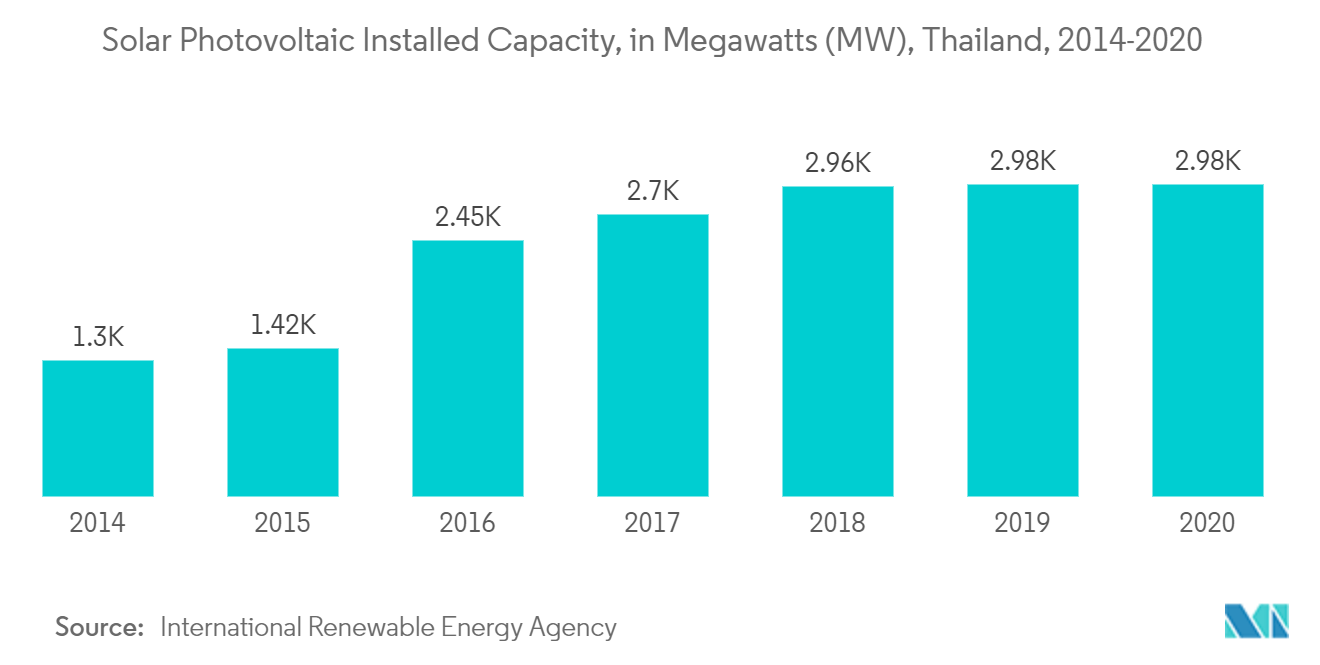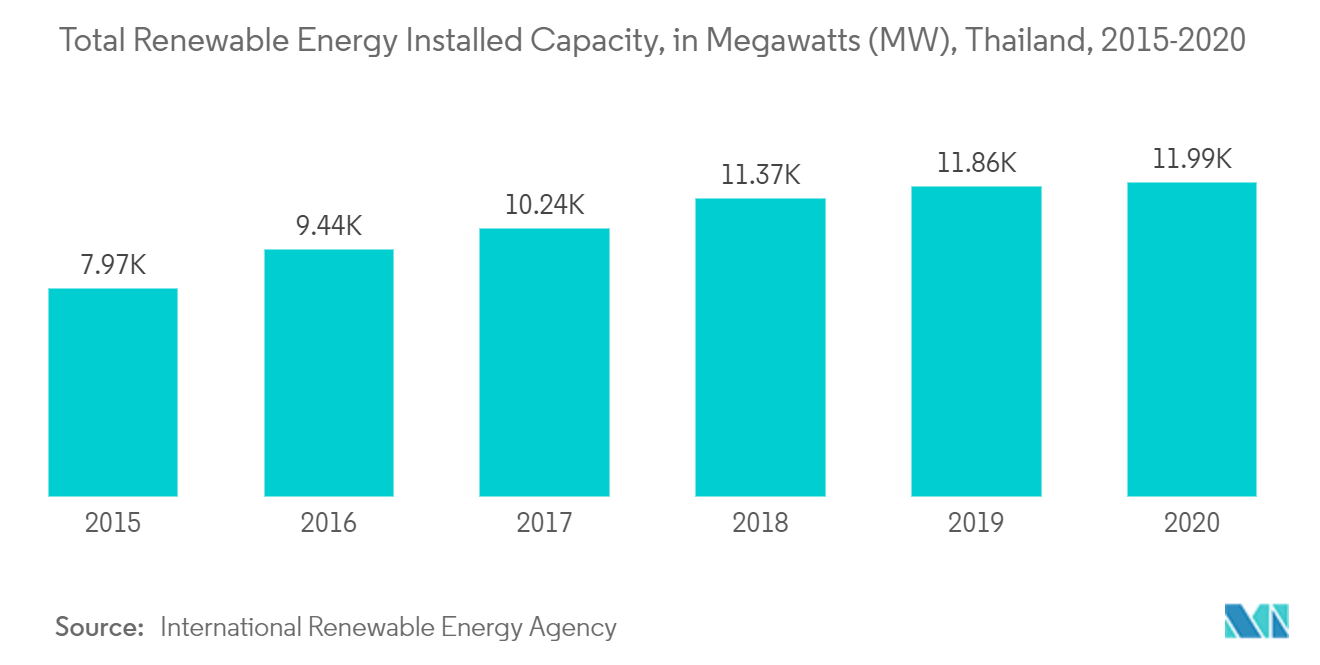Market Trends of Thailand Solar Energy Industry
This section covers the major market trends shaping the Thailand Solar Energy Market according to our research experts:
Solar Photovoltaic (PV) Segment Expected to Dominate the Market
· The solar PV segment is likely to hold the largest market share during the forecast period, owing to declining costs of solar modules and the versatility of these systems for various applications, like electricity generation and water heating.
· According to the International Renewable Energy Agency (IRENA), the installed solar PV capacity in Thailand was around 2,983 MW in 2020, up from 1,420 MW in 2015, recording a growth of around 11% during the year. The growth is the result of huge deployments of solar PV installations in India, particularly for utility projects. The Indian government has plans to increase the solar PV installed capacity as well.
· In 2020, BCPG Public Company Limited (BCPG) commissioned a 12 MW solar rooftop PV project located on the roof of Chiang Mai University in Thailand.
· In December 2021, Huaneng Power International Inc. connected the second phase (120 MW) of Dezhou Dingzhuang floating solar photovoltaic (PV) park. The total installed capacity of the plant is 320 MW, and the project is capable of generating around 550 million kWh of electricity per year.
· Moreover, the country has several upcoming solar PV projects. The Electricity Generating Authority of Thailand is developing a 778 MW Bhumibol Dam Solar PV Park in Tak. The major project is likely to commence in 2024 and is expected to enter into commercial operation in 2026.
· Owing to such developments, the solar PV segment is expected to have a dominant market share in Thailand during the forecast period.

Supportive Government Policies to Drive the Market
· The Thai government is encouraging renewable energy installations across the country to reduce greenhouse gas emissions by 20-25% by 2030. The government has also been supporting the solar power market by providing various incentives and regulatory support.
· The country has planned to further open its energy market for private electricity trading through the New Solar Rooftop Regulations 2020. As per the regulation, solar PV owners can be connected to the grid for trading electricity, using the power transmission and distribution infrastructure by paying a transmission fee to the public utilities. The fee for retail power trading will be based on the amount of electricity transferred and the level of congestion in the transmission line.
· The country has revised its Power Development Plan (PDP). As per PDP 2020, Thailand plans to add 50 MW of residential rooftop solar and increase up to 250 MW by 2024.
· Thailand has set a target for renewables to account for 30% of the power mix by 2037. In 2020, the country generated 11991 MW of renewable energy capacity, which was higher compared to 7968 MW in 2015.
· Moreover, the Thai government is supporting the deployment of floating solar energy farms as part of its green energy development plans. In November 2020, the Industrial Estate Authority of Thailand (IEAT) signed a memorandum of understanding with the Provincial Electricity Authority to build four floating solar plants in four industrial estates with a total capacity of 60 megawatts.
· Therefore, supportive government policies and initiatives are expected to drive the Thai solar energy market in the forecast period.

